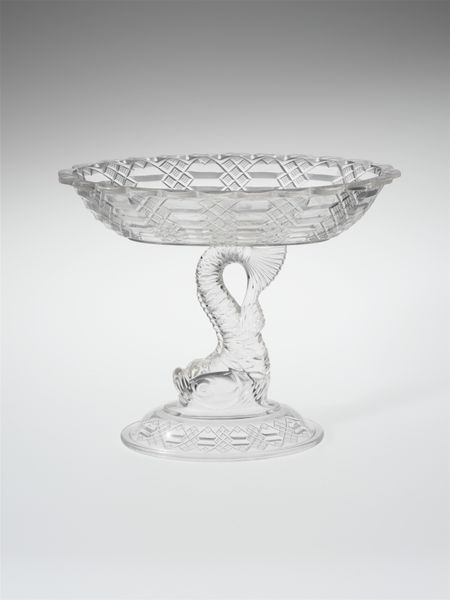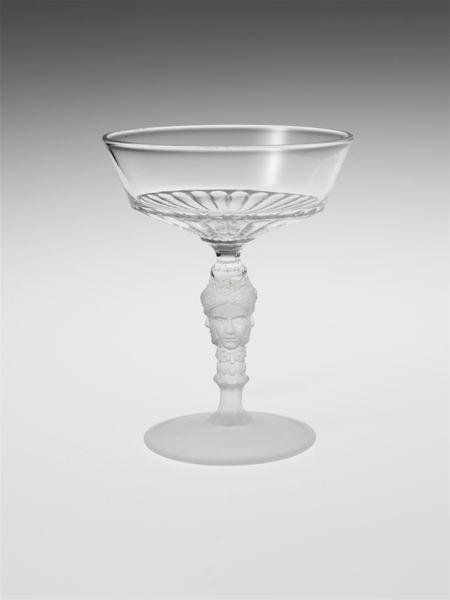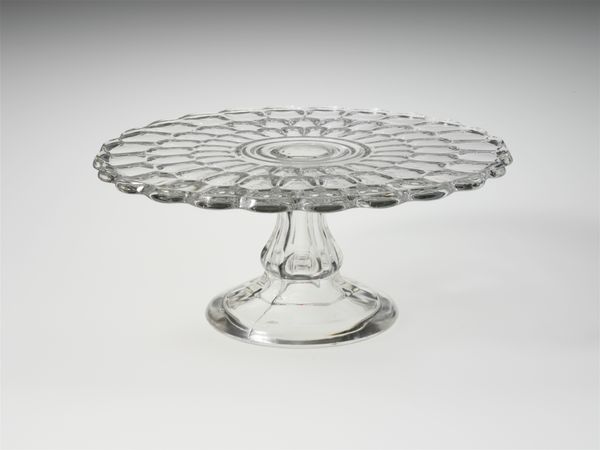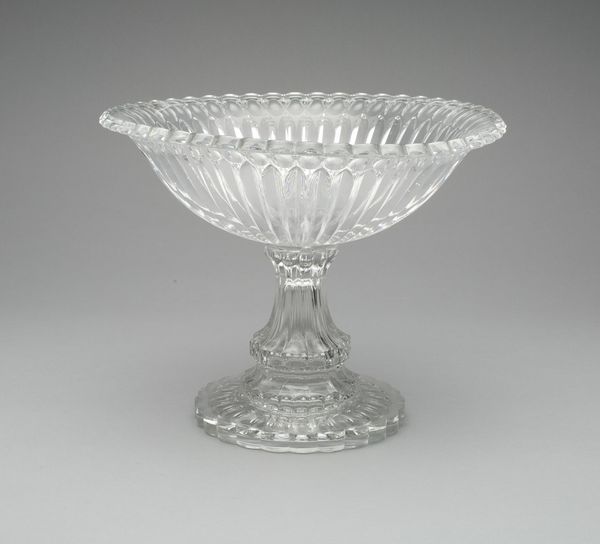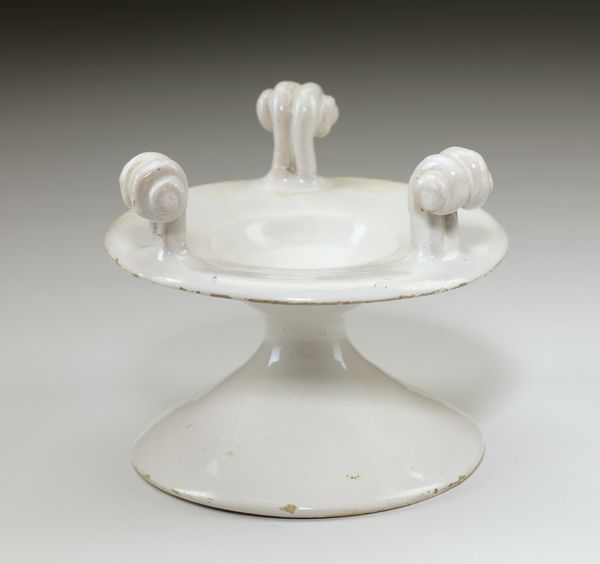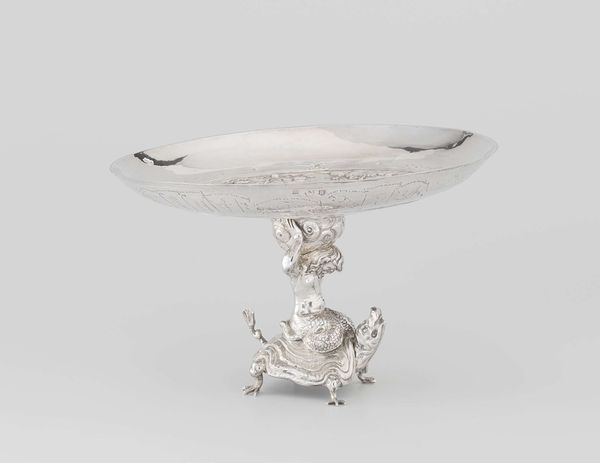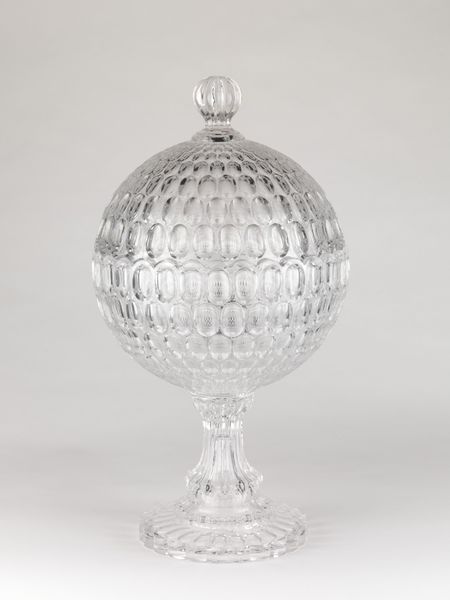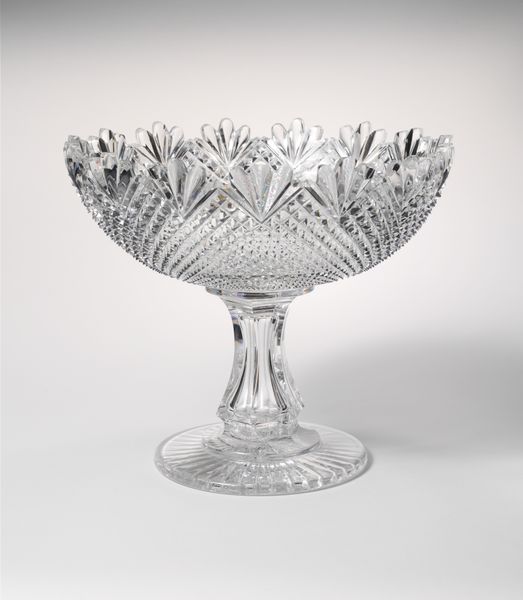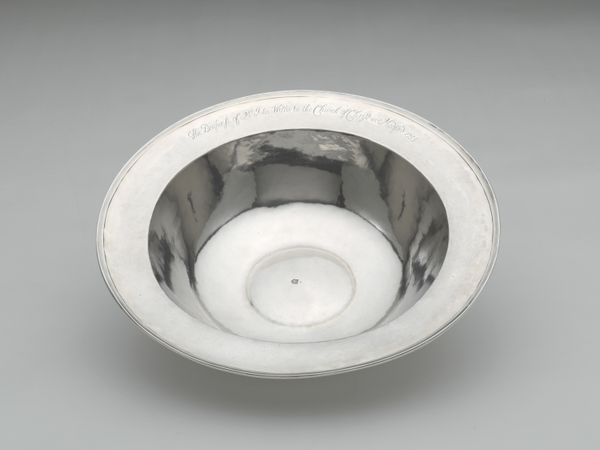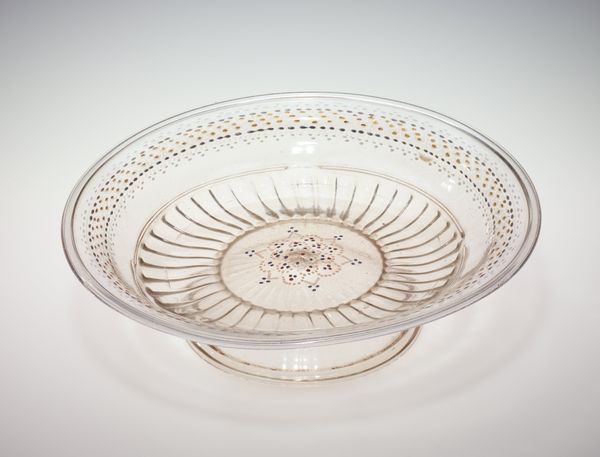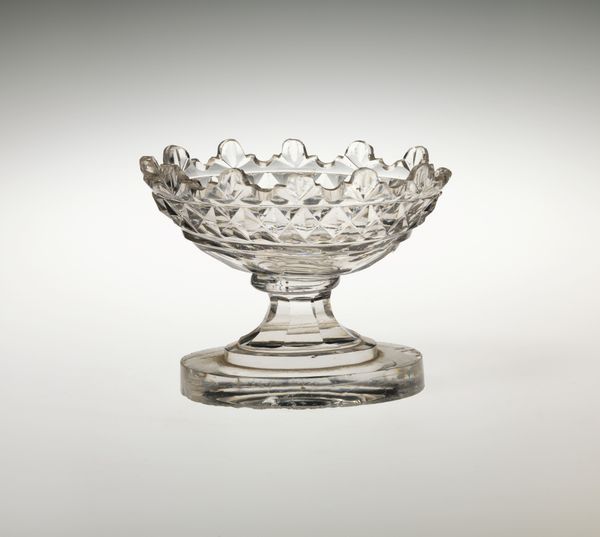
glass, sculpture
#
glass
#
sculpture
#
decorative-art
Dimensions: H. 9 1/8 in. (23.2 cm); Diam. 10 1/2 in. (26.7 cm)
Copyright: Public Domain
Curator: Before us, we have a striking glass sculpture, a compote created by Bakewell, Pears and Company, sometime between 1860 and 1880. The piece resides here at the Metropolitan Museum of Art. Editor: It's ethereal. The way the light catches the curves… It almost appears to float, suspended between form and function. The dolphin motif gives it a sense of dynamism. Curator: Yes, and thinking about its production, this wasn't merely about aesthetics. Bakewell, Pears and Company was known for its pioneering role in mechanized glass production. This piece exemplifies how they harnessed new technologies to make luxury items more accessible. The glass blowing processes, the mold making, all indicative of a shift in consumer culture during that period. Editor: Precisely, yet look at the detail! The fins of the dolphin, the scalloped edge of the bowl, each form carefully considered. The semiotics are rich, the dolphin symbolizes swiftness and deliverance; in its compositional setting, this vessel is elevated from mundane into the mythological. Curator: Good point! However, considering its intended function and broader availability, how does that dilute the mythological symbolism you mentioned? It's mass production intended to capitalize on trends—an ocean themed craze during a new era of maritime commercialism? Editor: That’s the heart of the dichotomy, isn’t it? Its accessibility doesn't negate the aspiration toward a more luxurious experience, a kind of cultural aspirational gesture for its owners. A common vessel imbued with an elevated essence through careful craftsmanship, not lost in industrial manufacturing, which, regardless, still required skilled hands. Curator: Indeed. Ultimately, this compote serves as a potent material artifact of shifting societal values. The means of production become just as, if not more, interesting than the pure aesthetics alone. Editor: I agree, that by exploring the craftsmanship through its form, it becomes clear that something initially functional can ascend into an expression of dreams through elegant design, leaving an enduring testament of its time.
Comments
No comments
Be the first to comment and join the conversation on the ultimate creative platform.
